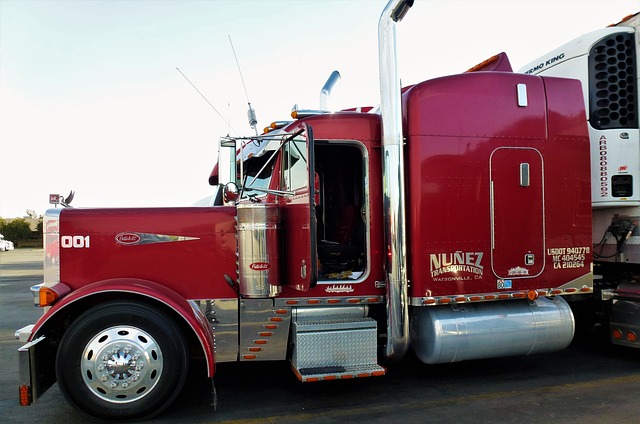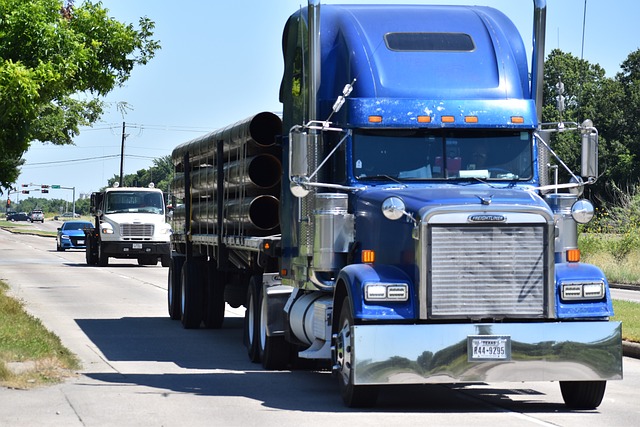Registering a car in California is a straightforward process, but understanding the requirements and steps is essential. This guide will walk you through everything from eligibility to common issues, ensuring a smooth experience. To start, you’ll need to meet specific criteria, gather vital documents, and involve key players like the DMV and VIN verifier. By following our step-by-step instructions, you’ll be on your way to legal vehicle registration in no time.
- Eligibility Requirements for Car Registration in California
- Gather Necessary Documents for Car Registration
- The Role of the DMV and VIN Verifier in Car Registration
- Step-by-Step Guide to Registering Your Vehicle in California
- Common Issues and Tips for a Smooth Car Registration Process
Eligibility Requirements for Car Registration in California

To register a car in California, individuals must meet specific eligibility requirements set by the Department of Motor Vehicles (DMV). One crucial aspect is ensuring that the vehicle is safe and legally operable. This includes passing an emission test, which verifies the car’s air pollution control system complies with state standards. Additionally, the vehicle must have a valid registration from its previous state of residence or country of origin.
The DMV also mandates a Vehicle Identification Number (VIN) verification process, often facilitated by a VIN verifier. Using a mobile VIN verification service or a physical inspection at a certified location, the unique VIN on the car is cross-referenced with manufacturer records to confirm authenticity and history. This step is essential for preventing fraud and ensuring that registered vehicles match their official documentation.
Gather Necessary Documents for Car Registration

Before heading to the DMV for car registration, make sure you have all the required documents ready. This process is designed to verify your vehicle’s authenticity and ensure it complies with California’s standards. Gather important paperwork such as the title or sales receipt, a valid driver’s license or state ID, proof of insurance, and a completed Vehicle Registration Application form. Additionally, you’ll need to provide a valid inspection certificate from a certified mechanic or a mobile vin verifier for a quick and convenient vin inspection.
Remember to check the California DMV’s website for specific requirements and guidelines. Using a mobile vin verifier can streamline this process by providing an efficient way to verify your vehicle identification number (VIN) and ensure all details are accurate. This step is crucial to avoid delays or issues during registration, so take time to gather these necessary documents before visiting the DMV.
The Role of the DMV and VIN Verifier in Car Registration

The Department of Motor Vehicles (DMV) plays a pivotal role in car registration processes in California. It’s responsible for ensuring that all vehicles on the road meet safety and legal standards. During the registration process, the DMV relies on the Vehicle Identification Number (VIN) to accurately identify each car. This number is crucial as it provides detailed information about the vehicle’s history, including its original manufacturer, model year, and any previous owners.
Additionally, many California residents opt for a mobile VIN inspection or mobile VIN verification service to streamline the registration process. These services use specialized tools to validate the VIN data independently, ensuring accuracy and saving time. A reliable mobile VIN verifier can cross-check information with various databases, including those of insurance companies and the National Motor Vehicle Title Information System (NMVTIS), to confirm the vehicle’s authenticity and condition before registration.
Step-by-Step Guide to Registering Your Vehicle in California

Registering a car in California involves several steps that can be streamlined with the help of the Department of Motor Vehicles (DMV) and their Vehicle Identification Number (VIN) verifier tools. Here’s a step-by-step guide to ensure the process is smooth and efficient.
First, gather all necessary documents such as your driver’s license, proof of insurance, and the title for your vehicle. You can then visit a DMV field office or use their online services if eligible. If you prefer a mobile vin verification, many third-party apps offer this service, making it convenient to complete your VIN inspection from the comfort of your home. Once all documents are in order, submit them to the DMV. They will verify the VIN using their digital tools, ensuring that the vehicle matches the provided information. After successful verification, you’ll receive your registration documents and a license plate for your car.
Common Issues and Tips for a Smooth Car Registration Process

When registering your car in California, one of the most common issues is misinterpreting or overlooking specific requirements. This can include incorrect documentation, missing forms, or failure to pass the vehicle inspection. To avoid these hurdles and ensure a smooth process, double-check all paperwork well in advance. Make sure you have the necessary documents like the title, registration application, proof of insurance, and a valid driver’s license. Additionally, confirm that your car meets the state’s safety and emissions standards by conducting a thorough pre-registration inspection—consider utilizing a mobile vin inspection or DMV VIN verifier to streamline this step.
Another tip for a hassle-free experience is to be prepared with accurate information about your vehicle, including its make, model, year, and VIN (Vehicle Identification Number). Incorrectly providing this data can delay the registration process. If you’re unfamiliar with any aspect of the procedure or encounter challenges during submission, don’t hesitate to reach out to a DMV representative for guidance. They can provide real-time assistance tailored to your specific situation, ensuring that any potential issues are addressed promptly.
Registering your car in California is a straightforward process, but it requires attention to detail. By understanding the eligibility requirements, gathering the right documents, and familiarizing yourself with the role of the DMV and VIN verifier, you can ensure a smooth registration experience. Follow our step-by-step guide and be prepared to navigate any common issues that may arise. Remember, a properly registered vehicle is not only legally required but also ensures your safety on California’s roads.
